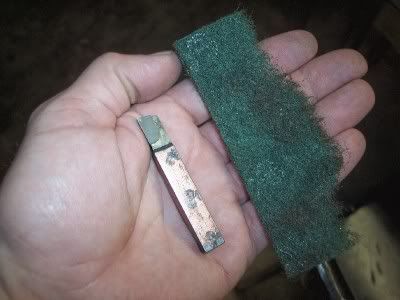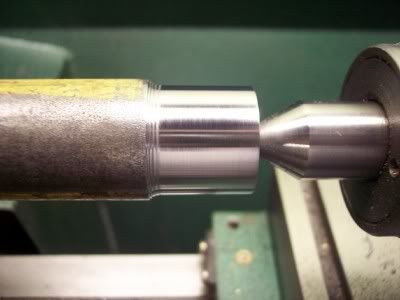Marinesteam
Well-Known Member
- Joined
- Nov 25, 2008
- Messages
- 46
- Reaction score
- 0
Hi all,
I have generally used brazed carbide toolbits or insert tooling in my lathe with good results. I am doing a lot of turning for my steam engine project with 1018 CRS and getting a fairly lousy finish. A machinist friend sharpened & honed a carbide bit to a razor edge with a tiny nose radius with good results but the edge didn't hold up well. He also mentioed that HSS may be a better choice. This leads to a few questions which I am too embarrassed to ask my machinist freind (an old workld tool & die guy).
I am purchasing a carbide grinder with better adjustable rests than my bench grinder (which is usually setup for buffing and I don't want to switch back and forth often anyway), so that I can sharpen my own toolbits. Also want to try fly cutting.
The questions are:
I have a 1/4 toolbit which I ground a LONG time ago in machine shop class but we were using lantern (rocker?) toolposts. I haven't used it with the Aloris toolpost 'cause it seems to small to fit into the Aloris holder. What is the proper way to hold a sqare stock toolbit in a Aloris type (BXA) toolpost? Do I need an adapter and a small piece of square stock or do I grind the cutting edge from a larger, longer piece of HSS stock (1/2"?). Does the geometry need to change? I seem to remember needing to angle the cutting bit upward in the rocker toolpost but won't be able to do this in an Aloris.
An additonal question....What's the best speed, feed & cutting geometry for 1018 CRS?
Thanks in advance
Ken
I have generally used brazed carbide toolbits or insert tooling in my lathe with good results. I am doing a lot of turning for my steam engine project with 1018 CRS and getting a fairly lousy finish. A machinist friend sharpened & honed a carbide bit to a razor edge with a tiny nose radius with good results but the edge didn't hold up well. He also mentioed that HSS may be a better choice. This leads to a few questions which I am too embarrassed to ask my machinist freind (an old workld tool & die guy).
I am purchasing a carbide grinder with better adjustable rests than my bench grinder (which is usually setup for buffing and I don't want to switch back and forth often anyway), so that I can sharpen my own toolbits. Also want to try fly cutting.
The questions are:
I have a 1/4 toolbit which I ground a LONG time ago in machine shop class but we were using lantern (rocker?) toolposts. I haven't used it with the Aloris toolpost 'cause it seems to small to fit into the Aloris holder. What is the proper way to hold a sqare stock toolbit in a Aloris type (BXA) toolpost? Do I need an adapter and a small piece of square stock or do I grind the cutting edge from a larger, longer piece of HSS stock (1/2"?). Does the geometry need to change? I seem to remember needing to angle the cutting bit upward in the rocker toolpost but won't be able to do this in an Aloris.
An additonal question....What's the best speed, feed & cutting geometry for 1018 CRS?
Thanks in advance
Ken






